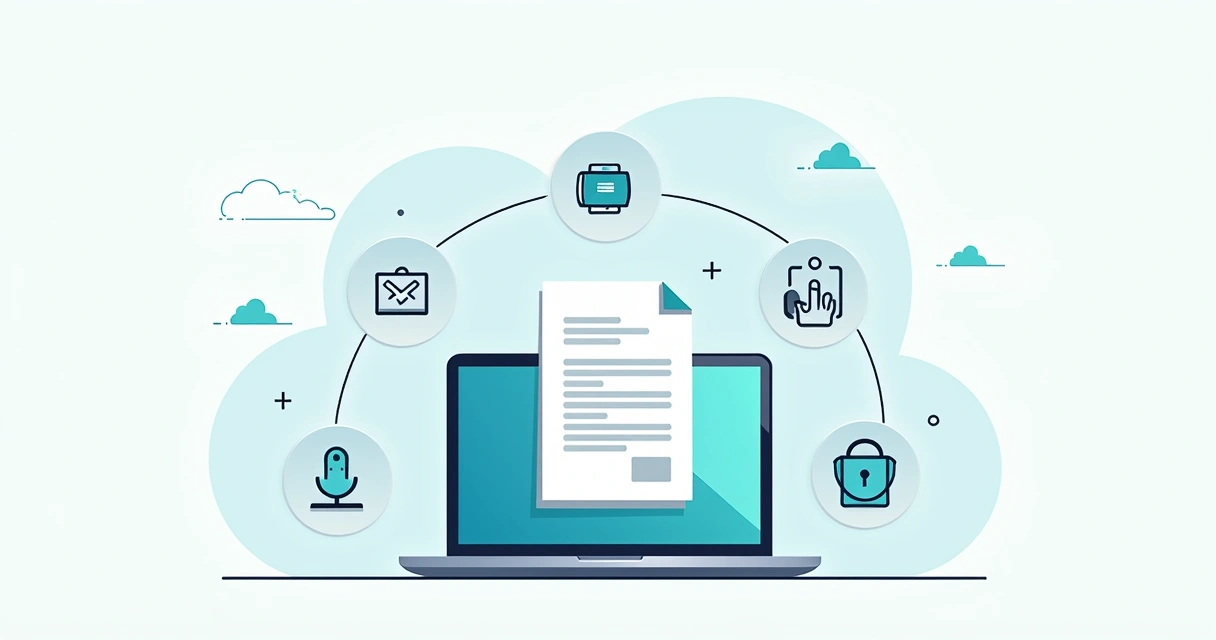If you’ve ever needed to sign a contract from your sofa, or initial a document while traveling, you’re not alone. More people and businesses are choosing to sign documents online, avoiding the headache of printing, scanning, or posting papers. The process can seem a little mysterious, but really, it’s as safe, straightforward, and legal as old-fashioned ink, when done right.
In this guide, I’ll walk through the steps, the safety measures, and a few personal touches that can make digital signing feel just as trustworthy as meeting face to face. And if you’re considering something like CloudSign.ie for your own needs, you’ll see why modern eSigning tools are more accessible, and reliable, than ever.
Why eSigning is changing how we handle paperwork
The days of chasing signatures with paper documents feel a bit outdated now. Most of us would rather manage paperwork in a fast, secure, and transparent way. eSigning platforms now let anyone, whether a freelancer or a large enterprise, handle contracts and agreements with a few clicks, without worries about lost mail or office hours.
With tools like CloudSign.ie, you can upload, fill, and send contracts for others to sign, all from your laptop, phone, or tablet. But speed isn’t the only advantage.
- Convenience: Complete agreements anywhere, at any time.
- Security: Advanced encryption protects every file.
- Cost savings: No postage, printing, or storage fees.
- Legal compliance: Electronic signatures hold weight in court, if you do things properly.
Signing can be simple, safe, and legal, without a printer.
How to sign a document online: step by step
If you’ve never tried it, you might picture something technical or complicated. It’s usually not. Here’s what happens:

- Upload your document. Usually, PDF, Word, PNG, and JPEG files are supported. With CloudSign.ie, you can start with nearly any file format that makes sense for business.
- Edit or fill in fields. You can add places for signatures, initials, dates, or even comments. Need several people to sign? You can send each their own personalized link to fill their part digitally.
- Sign the document. Either draw your signature, upload an image of it, or use a typed version. On some platforms, an audit trail gets created automatically, recording times, locations, and IP addresses for extra peace of mind.
- Send to others. If it’s a contract, it goes to the other party, who follows the same steps. Everyone gets a copy for their records.
- Download the signed file securely. The completed, digitally-signed document is now locked, and a certificate or log (called an audit trail) is often attached.
You keep control, no matter where you are.
File formats and compatibility
You might wonder, “Will it work with my kind of file?” Most modern services, including CloudSign.ie, work with PDF, DOCX (Word), and common image files like JPG or PNG. This means you’re not stuck if someone sends an odd format. Still, PDF is usually best for locking in formatting and ensuring every detail displays right.
Digital security: is online signing safe?
Perhaps the first worry is: “If I eSign, will my information end up in the wrong hands?” Here’s the thing. When you use a reputable service, the document never travels unprotected. Not even for a split second.
According to the Cybersecurity and Infrastructure Security Agency, digital signatures use public key cryptography. That’s a fancy way of saying a private code is attached to your file, so only the right users can open or change it. No one can change the document after it’s signed, without leaving a visible trace.
CloudSign.ie encrypts and stores documents only as long as needed. Once your file is signed and downloaded, you can choose to delete it from storage, maintaining control and privacy. That’s better than some big-name alternatives, who sometimes keep documents longer than you’d like.
Encryption protects not only your files, but your peace of mind.
What makes online signatures legally valid?
A proper digital signature, as explained by firms like Signaturit and SSL.com, must meet a few clear conditions:
- The signer agrees to use an electronic signature (consent).
- The document is accessible to all signing parties.
- A digital audit trail exists, tracking what was signed and by whom.
- The process follows regulations like the EU eIDAS or, for Ireland, local digital signature laws.
In Ireland and the EU, many agreements signed online have full legal standing. Still, there are rare cases, like certain family law or wills, where “wet ink” is required. For the vast majority of contracts and business forms, digital signatures are accepted in courts and by government bodies.
Want to dig deeper? Check guides on electronic signature laws in Ireland or common digital signature FAQs. Or, if you want something quick: digital signatures are about as strong as the person signing them and the process used.
Moving faster and staying compliant
Digital signing isn’t just about doing things quicker. It’s about doing them the right way. With a quality service like CloudSign.ie, your business can produce fast, protected, and trackable contracts for clients and partners. And if someone ever challenges a signature, the digital trail shows every action, every step of the way.

Worried about getting started? It’s straightforward. For example, CloudSign.ie has a guide just for beginners and offers a free plan for individuals, where you can send up to 21 documents monthly, at no cost. You can also check their free electronic signature walkthrough to see a demo.
Of course, some international companies (like DocuSign or Dropbox Sign) are out there, but CloudSign.ie keeps things local, secure, and offers more generous free usage for single users.
The human touch: a personal experience
The first time I eSigned a contract, I hesitated. Would it be safe? Would the other person trust it? But within minutes, both of us had copies, with every action logged and encrypted. No chasing couriers, no lost sleep. That sense of relief stuck with me. Maybe you’ve felt the same, or you’ll know it once you try it. If you’re curious, check the CloudSign.ie guide to fast, secure signing or see the differences in next-generation signature tools.
Once you try it, you won’t want to go back to paper.
Conclusion: the smart way to sign in 2024
You don’t need to be a tech expert to move your business into the digital age. Signing documents online is quick, safe, and legally recognized in most situations, especially with transparent platforms like CloudSign.ie. With support for all your key file types, robust encryption, and detailed audit logs, you’re protected from start to finish.
If saving time, cutting costs, increasing security, and following the law sound appealing, it’s time to try eSigning yourself. Transparency, simplicity, and the freedom to work from anywhere, these are just a few clicks away.
Curious which plan suits you, or just want to see how simple signing can be? Try CloudSign.ie’s free tier today and experience secure digital signing for yourself.
Frequently asked questions
How can I sign documents online?
With digital platforms like CloudSign.ie, you upload your document (PDF, Word, or image file), set up signature fields, and either type, draw, or upload your signature. Then you can send it to others or download the signed file, which is automatically protected by encryption and a digital audit trail.
Are online signatures legally binding?
Yes, in most jurisdictions, including Ireland and the EU, digital signatures are binding as long as all signers consent and the process meets local regulations. Documentation of who signed, when, and how is part of ensuring this legal status. For more detailed info, see guidance from SSL.com on international digital signature law or local specifics in the CloudSign.ie Irish law summary.
Is it safe to sign PDFs online?
When you use a reputable provider, signing PDFs online is secure. The top platforms apply public key cryptography and end-to-end encryption, as explained by the Cybersecurity and Infrastructure Security Agency. Your signature, data, and any edits are fully traceable and protected.
What is the best platform for eSigning?
While several global brands are available, CloudSign.ie stands out for users in Ireland and beyond by providing generous free plans, local compliance, and AI-powered contract management. Unlike some competitors, CloudSign.ie keeps your data secure, private, and lets you manage more files for free each month.
Does it cost money to sign online?
Many eSigning solutions have free options. CloudSign.ie lets individuals sign and send up to 21 documents per month without charge. If your needs grow, you can explore business plans, but trying it doesn’t cost anything up front.
